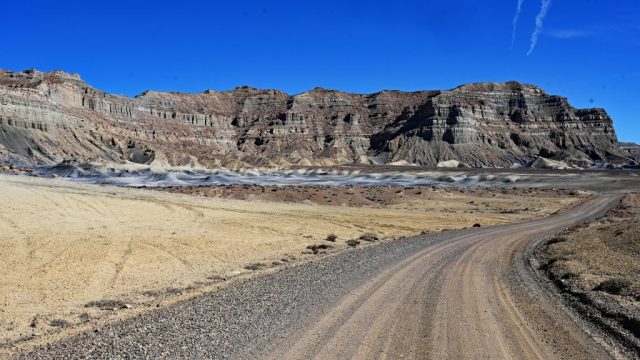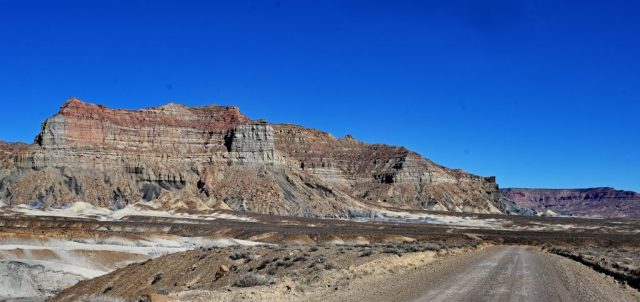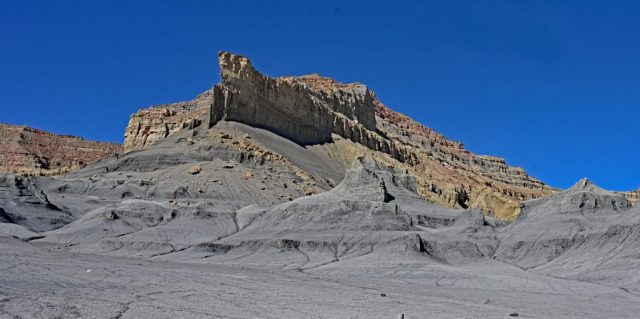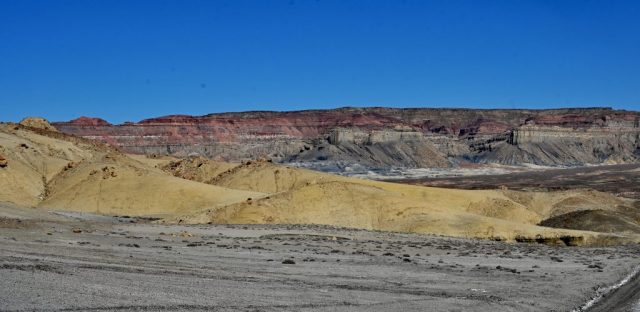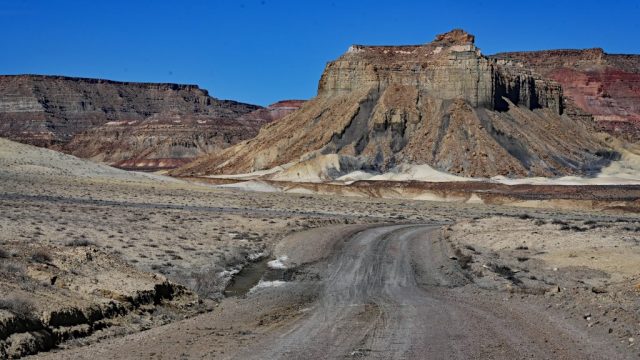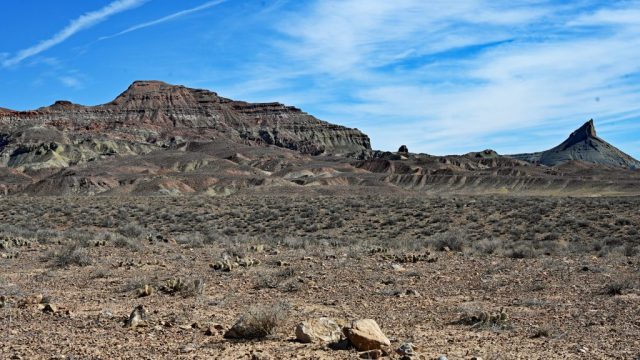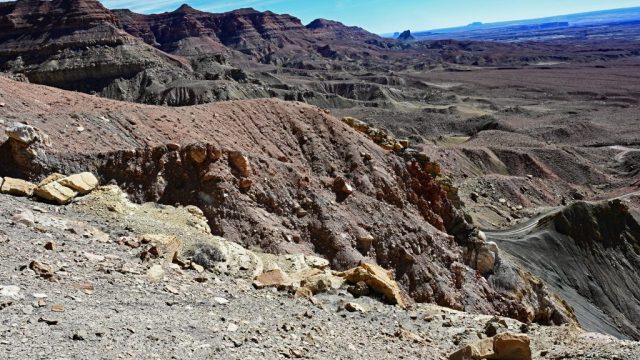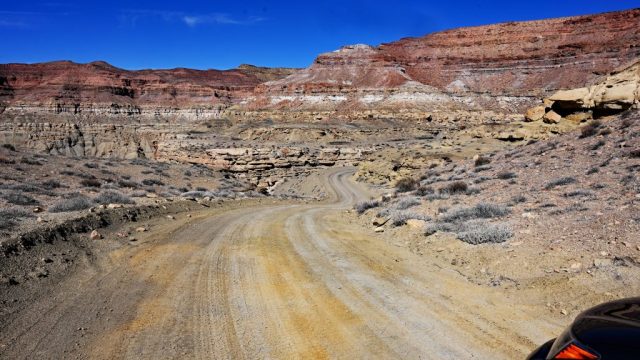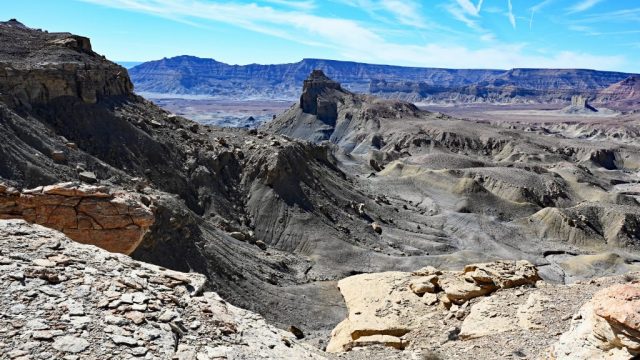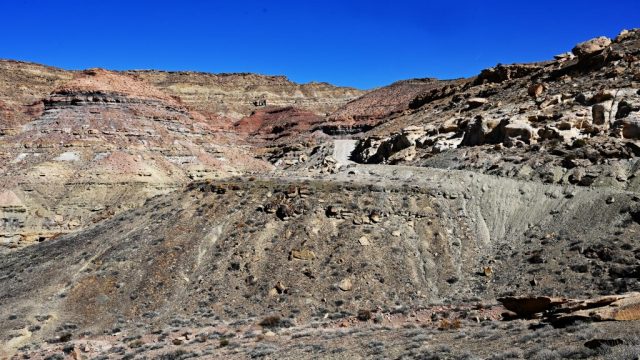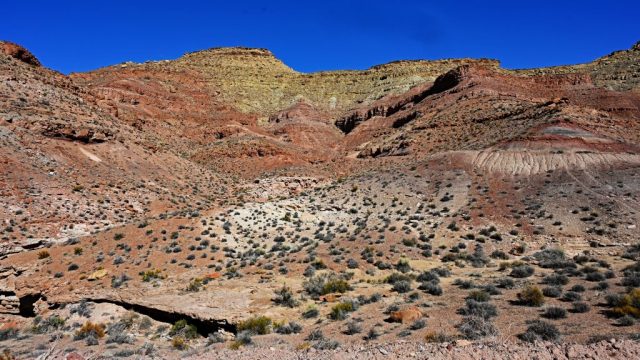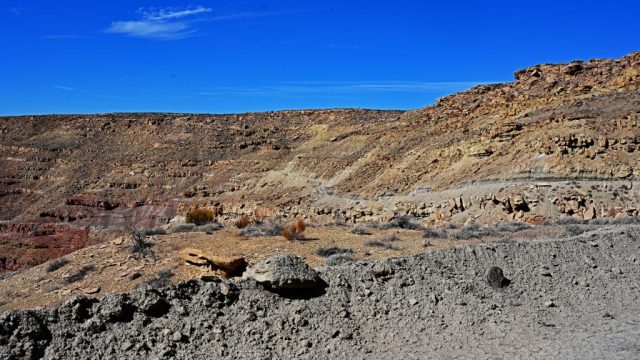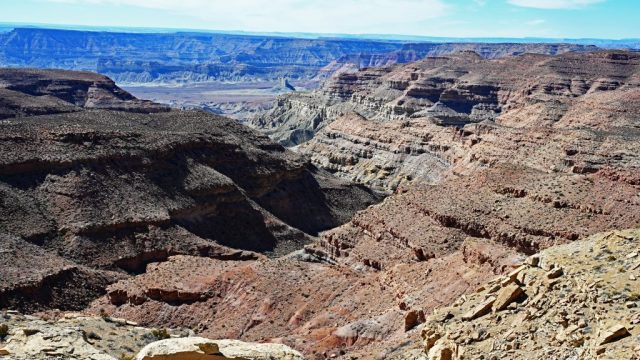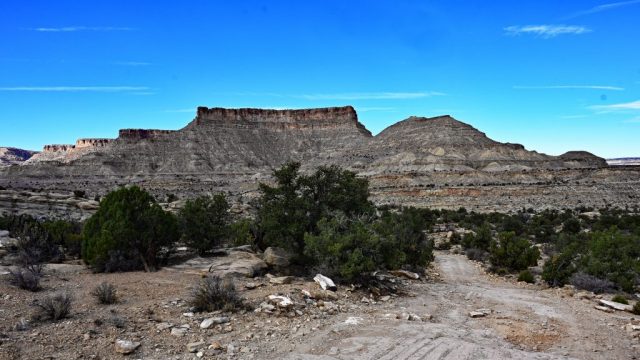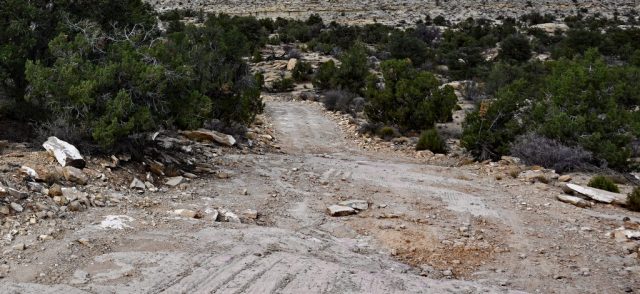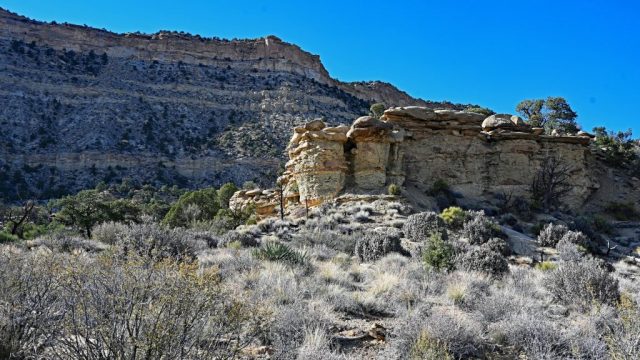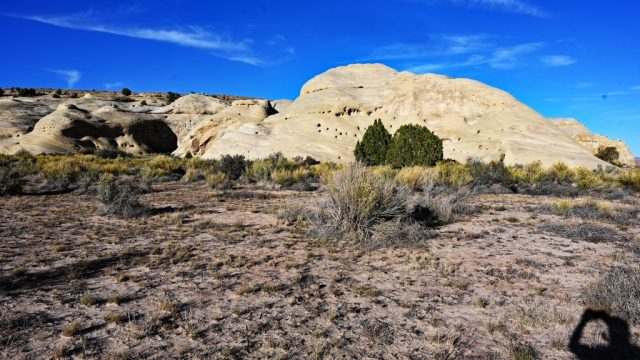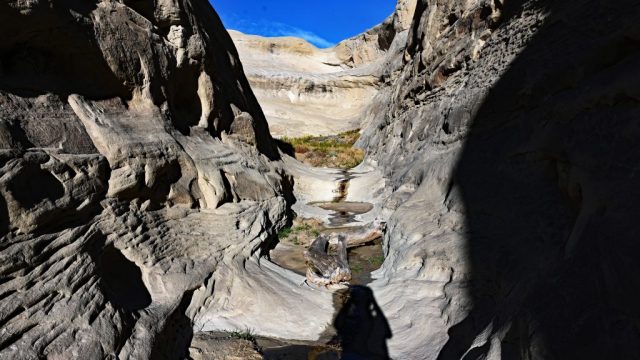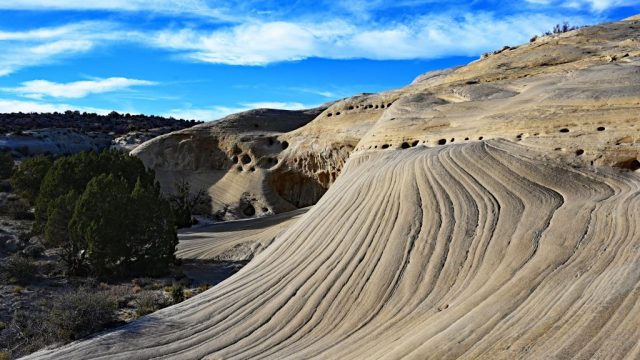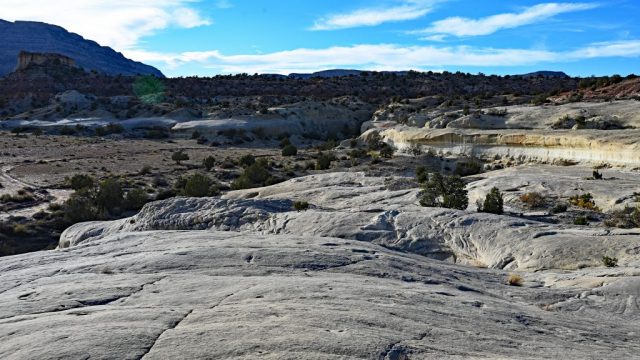October 19, 2025
The day began with a faint golden shimmer over Big Water, the kind of soft desert light that promises adventure. I set out toward the Cottonwood Road, planning to follow the wild, eastern edge of Lake Powell. Before heading deeper into the backcountry, I stopped at the Information Center in Big Water to ask about road conditions. The man behind the counter shook his head and said that the main road was closed for repairs—but with a grin, he added that I could still take the backcountry route “for fun.”
That sounded like a good enough invitation.
I turned onto Road K8000, which soon became Road 300, better known as the Smoky Mountain Road. From the very first mile, it felt like entering another world. The air shimmered with heat, and the land unfolded into vast, rolling waves of stone and sand. Towering ridges rose to my left and right, their flanks colored in endless shades—warm ochre, pale gold, and deep silver-grey. Every bend in the road opened to a new panorama.
After about a mile, I reached the first real obstacle—a narrow stream cutting across the road. The descent into the wash was steep, and the opposite bank rose sharply. At first, it looked impassable. But I learned quickly that this was only the beginning, and in comparison, it would soon count as an easy one.
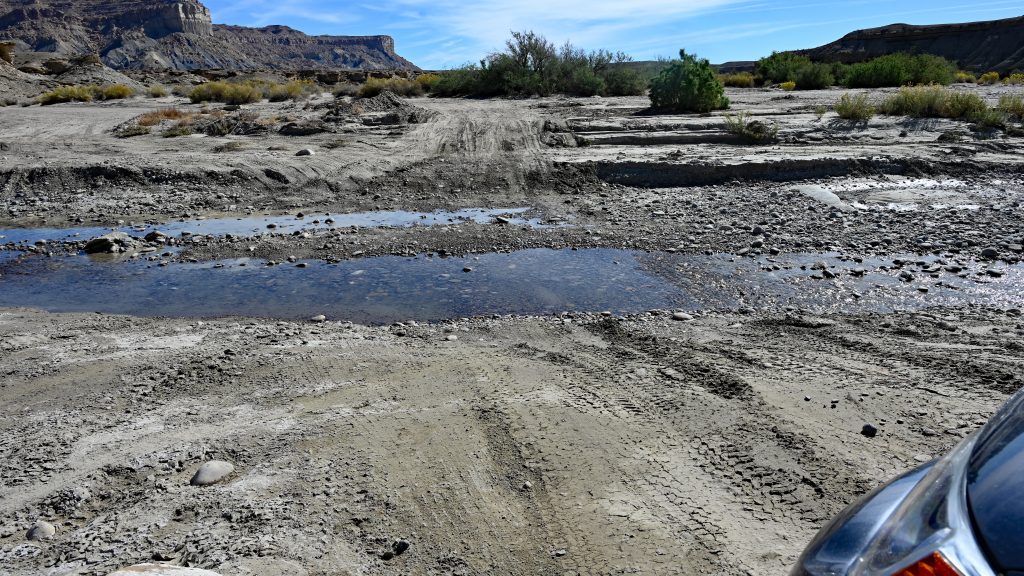
The next fifteen miles were pure wonder. The road climbed and twisted between canyons and stone terraces. The Smoky Mountains lived up to their name: long, smoky ridges of grey and violet sandstone layered like folded fabric, fading into the haze of distance. To the west, I could see the glimmer of Lake Powell, a strip of blue caught between pale cliffs. Around every turn, the colors shifted—one range almost golden like the morning sun, the next one a cool steel-grey, then ochre and yellow again, and finally, far ahead, I caught sight of deep red and violet rocks glowing under the midday light.
I met two cyclists along the way, dusty but smiling, pushing their bikes up a long slope. They told me they had come from the opposite side, from Highway 12, doing the same trail in reverse. When I mentioned I didn’t have a four-wheel drive, they looked at me, half amused and half concerned. “You’ll have some steep climbs ahead,” one of them warned. I thanked them and decided to continue anyway.
Soon enough, their words proved true. The track turned rougher and steeper. Stones rattled under the tires, and sometimes it felt as if the wheels had no grip at all. The climb was long and tense, and I didn’t dare stop to take a photo—I knew that if I did, I might not get moving again. When I finally reached the top, I took a picture, but it captured only the elevation gain, not the struggle of the climb.
From up there, the views were breathtaking. The horizon stretched into a labyrinth of mesas and cliffs, each tinted differently by the sunlight—rust-red plateaus giving way to pale, almost white ridges; dark volcanic-looking hills rising in the distance like sleeping giants. The land looked endless, ancient, and utterly silent. The road itself seemed to vanish into the earth, reappearing far below as a faint scar of dust.
As I began descending, the road worsened. I kept hoping it would get better after the next corner, but each turn brought only deeper ruts, looser stones, and steeper drops. When I reached the junction with Road 240, the track improved slightly, just enough to catch my breath. I took one last photo there.
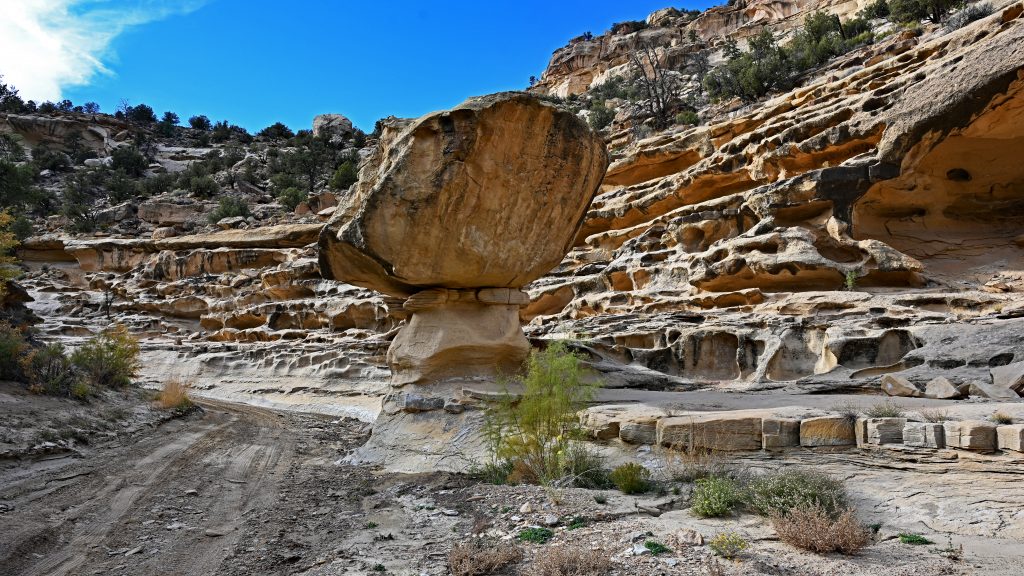
Then came Road 230—and things turned from bad to brutal. The surface was cracked and broken, the edges crumbling into sharp drop-offs. Several times the road plunged down into narrow washes where a small creek trickled. Each time, the undercarriage of the car scraped the rocky ground. I was grateful that the creek held only a little water; otherwise, I might have been stuck there. All I could think of was reaching the Hole in the Rock before sunset.
After seven bone-shaking miles, I finally reached the site known as the Twenty Mile Wash Dinosaur Tracks. I turned off the road, drove about two hundred yards into the dry wash, and parked the car. The silence was complete—only the faint whisper of wind over sand. I walked about four hundred yards toward the sandstone outcrops. The rocks were warm under my hands, their surfaces marked with ancient impressions of creatures that had once crossed this desert long before it was a desert at all. For a while, I forgot the road, the car, and the bumps. It felt good just to move, to climb over the rocks and feel the quiet around me.
Forty minutes later, I returned to the car and continued the last stretch toward Hole in the Rock. After two more miles, I reached the junction and turned right, following the track toward the Upper Dry Fork. The sun was already low, spreading a deep red glow over the cliffs. I parked and decided to spend the night there, surrounded by stone and silence.
It had been one of the hardest drives I’ve done—rough, exhausting, and sometimes a little frightening. But as the last light faded from the rocks, turning them to shades of violet and bronze, I knew I wouldn’t have missed it for anything. The Smoky Mountains had shown their wild beauty—harsh, silent, and unforgettable.
